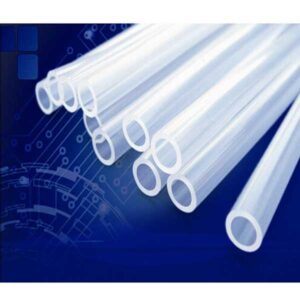The Significance of Peristaltic Pump Pipe Joints: Ensuring Efficient and Reliable Fluid Transfer
Peristaltic pumps are widely recognized for their ability to handle delicate or shear-sensitive fluids with precision and reliability. These pumps rely on a crucial component known as the peristaltic pump pipe joint, which plays a vital role in the overall performance and efficiency of the pump. In this article, we will explore the importance of peristaltic pump pipe joints and their impact on ensuring efficient and reliable fluid transfer.
Understanding Peristaltic Pumps
- Peristaltic Pump Operation
Peristaltic pumps employ a rotating roller or shoe mechanism to compress and relax a flexible tube, creating a peristaltic action that propels the fluid through the tube without direct contact between the fluid and the pump components. This gentle pumping action makes peristaltic pumps suitable for handling delicate, viscous, or shear-sensitive fluids. - Versatility and Applications
Peristaltic pumps find applications in various industries, including pharmaceuticals, biotechnology, food and beverage, chemical processing, and wastewater treatment. They are utilized for precise dosing, metering, and transferring fluids of different viscosities, ranging from low-viscosity solutions to highly viscous or abrasive fluids.
The Role of Peristaltic Pump Pipe Joints
- Tube Connection:Peristaltic pump pipe joints serve as the connection point between the flexible tube and the pump housing or tubing system. They securely hold the tube in place, preventing leaks or disconnections during the pumping process.
- Seal Integrity:The pipe joint ensures a reliable seal between the tube and the pump, preventing fluid leakage and maintaining the desired flow rate and pressure. This is particularly important when handling valuable or sensitive fluids, where any leakage can result in product loss, contamination, or compromised process integrity.
- Tube Compression and Occlusion:The pipe joint’s design and materials determine the level of compression and occlusion applied to the flexible tube. Proper compression is necessary to create the peristaltic action, effectively propel the fluid, and maintain consistent flow rates. The joint should provide sufficient occlusion to prevent backflow or reverse pumping during the relaxation phase.
Key Considerations for Peristaltic Pump Pipe Joints
- Material Compatibility
The pipe joint material must be compatible with the fluid being transferred to ensure chemical resistance, durability, and longevity. Different materials, such as plastics, elastomers, or metals, may be chosen based on the specific fluid characteristics and industry requirements. - Flexibility and Reusability
Peristaltic pump pipe joints should possess sufficient flexibility to accommodate tube insertion and removal, allowing for easy maintenance and replacement. Reusable joints that can withstand multiple tube changes can reduce operational costs and downtime. - Cleanability and Sterilization
In industries requiring strict hygiene standards, such as pharmaceutical or food processing, pipe joints should be designed for easy cleaning and sterilization. Smooth surfaces, minimal crevices, and compatibility with cleaning agents and sterilization methods are essential for maintaining a sanitary environment. - Precision and Consistency
The pipe joint’s dimensional accuracy and consistency ensure uniform compression and occlusion of the tube, resulting in consistent flow rates and accurate dosing. Precise joints contribute to the pump’s ability to deliver precise volumes and maintain process control.
Maintenance and Replacement
- Regular Inspection:Peristaltic pump pipe joints should be regularly inspected for wear, damage, or signs of degradation. Any abnormalities should be promptly addressed to prevent leaks, disruptions, or compromised pump performance.
- Timely Replacement:As peristaltic pumps rely on the integrity of the pipe joints for efficient operation, timely replacement of worn or damaged joints is crucial. Following manufacturer recommendations and maintenance schedules ensures the pump continues to function optimally.
Peristaltic pump pipe joints play a significant role in facilitating efficient and reliable fluid transfer in peristaltic pumps. By securely connecting the flexible tube, maintaining seal integrity, and providing the necessary compression and occlusion, these joints contribute to the pump’s precise dosing, gentle handling of fluids, and overall performance. Proper selection, maintenance, peristaltic pump tubing connectors and replacement of peristaltic pump pipe joints are essential to ensure optimal pump operation and to meet the stringent requirements of various industries relying on peristaltic pump technology.
